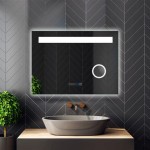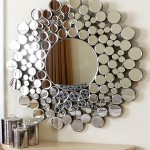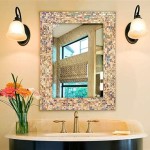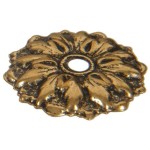How to Screen Mirror Android to Windows
Screen mirroring allows users to display the content of an Android device on a larger Windows screen. This functionality proves beneficial for various activities, including presentations, gaming, and enjoying media consumption on a bigger display. Several methods facilitate this connection, each with its advantages and limitations.
Using the Built-in "Connect" Feature in Windows 10 and 11: Windows 10 and 11 offer native wireless display capabilities, streamlining the connection process. This feature is compatible with Miracast-enabled Android devices. To initiate the connection, the user should first open the "Connect" app on the Windows machine by searching for it in the Start Menu. Simultaneously, the user must access the screen mirroring or screen cast settings on their Android device. The nomenclature may vary depending on the Android manufacturer and version. Once the Windows PC appears in the list of available devices on the Android device, selecting it will establish the connection. The Android device's screen will then be mirrored on the Windows display.
Leveraging the Microsoft Your Phone App: The Your Phone app, pre-installed on most Windows 10 and 11 machines, provides a more comprehensive integration between Android and Windows. While not strictly screen mirroring in its entirety, it allows users to access phone notifications, messages, photos, and even run Android apps directly on their PC. Some Android devices and Windows versions support screen mirroring through the Your Phone app. Users can check for the "Phone screen" option within the app to determine compatibility. If available, selecting this option will initiate the mirroring process, allowing control of the Android device from the Windows desktop with keyboard and mouse.
Employing Third-Party Applications: Various third-party applications facilitate screen mirroring between Android and Windows devices. These applications often provide additional features, such as enhanced performance, customizability, and support for older operating systems. Popular choices include AirDroid, ApowerMirror, and Vysor. These applications generally require installation on both the Android device and the Windows computer. Once installed, the user follows the application-specific instructions to establish a connection. Users should research and select a reputable application that meets their specific needs and device compatibility.
Utilizing Chromecast with Google Chrome Browser: While Chromecast is primarily designed for streaming media, it can also be used for screen mirroring. The Android device and the Chromecast device must be connected to the same Wi-Fi network. The user then casts their Android screen to the Chromecast using the Google Home app or the cast functionality within supported apps. The Chromecast will display the mirrored screen on the connected display. To view this on the Windows PC, the user opens the Google Chrome browser, navigates to the Chromecast's IP address (typically found in the Chromecast settings), and casts the browser tab to the Chromecast. This effectively displays the mirrored Android screen on the Windows machine via the Chrome browser.
Connecting via USB Cable (For Debugging and Development): A USB connection offers a more stable and higher-performance screen mirroring option, particularly useful for developers. This method requires enabling USB debugging on the Android device and installing the necessary Android Debug Bridge (ADB) tools on the Windows computer. Once configured, connecting the Android device to the Windows computer via USB allows developers to mirror the screen using tools like scrcpy. This method is generally more technically involved and less suitable for casual users, but it provides a robust solution for specific use cases, such as app testing and development.
Troubleshooting Common Screen Mirroring Issues: Users may encounter issues during the screen mirroring process. Common problems include connection failures, lag, poor image quality, and audio synchronization problems. Ensuring both devices are connected to the same strong Wi-Fi network can often resolve connectivity issues. Closing unnecessary applications on both devices can improve performance and reduce lag. Adjusting the display resolution or bit rate within the mirroring settings may improve image quality. If audio sync issues persist, adjusting the audio delay settings within the mirroring or streaming application can help mitigate the problem.
Factors Affecting Screen Mirroring Performance: Several factors can impact the performance of screen mirroring. Network congestion, the processing power of both devices, and the distance between the devices can influence the quality and latency of the mirrored display. Users should optimize their network environment, close unnecessary applications, and ensure their devices are in close proximity for optimal performance. The mirroring method itself also plays a role; wired connections, such as USB debugging, generally offer better performance than wireless methods.
Choosing the Right Screen Mirroring Method: The optimal screen mirroring method depends on the user's specific needs and the capabilities of their devices. For simple screen sharing and presentations, the built-in "Connect" app or Your Phone app may suffice. For more demanding tasks like gaming or high-quality video streaming, a wired connection or a third-party application offering enhanced performance might be more appropriate. Users should carefully consider their requirements and choose the method that best suits their individual circumstances.

How To Screen Mirror Android Windows Pc

How To Mirror Your Android Screen Pc Or Mac Without Root

How To Mirror Android Pc

How To Mirror Android Screen Windows 11 Geeksforgeeks

How To Mirror The Screen Of Your Android A Pc Neowin

How To Mirror Cast Your Android Display A Windows 11 Without Any

How To Mirror Android Screen Windows 11 Geeksforgeeks

How To Mirror Android Your Windows 11 Pc Guiding Tech

How To Mirror Android Screen Windows 11 Geeksforgeeks

How To Screen Mirroring From Android Windows Pc 4 Ways








